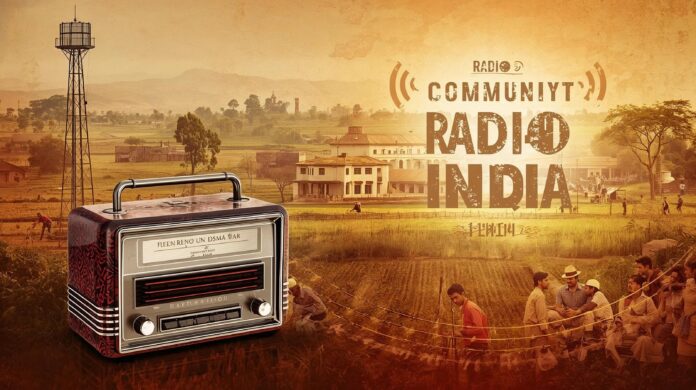There were days when radio commanded so much glory and adoration that only the people who experienced it can tell. Here I am reminded of my childhood days. Radio had to be on wherever you went—to a paan shop, tea stall, or hotel. In rural areas, one could see people riding cycles with radio sets hanging from their shoulders. Even on occasions like marriage, the radio set was not spared. It definitely formed part of the gifts carried from the bride’s home.
Even in urban areas, the glory and adoration that radio commanded can only be narrated by the people of those days. People who were fond of listening to news and request programmes of Hindi and Odia film songs were innumerable. People of those days have still retained their old radio sets with them.
But gradually, time has changed. With the passage of time, change is inevitable. After the Delhi Asian Games in the year 1982, television came into use on a grand scale in our country and people got the opportunity of both listening and viewing, sitting at home. Then serials like Ramayan and Mahabharat got so much popularity that the whole nation came to a halt during their telecast.
In the course of time, colour television appeared on the scene. People started talking in terms of “the era of radio coming to an end.” But this is not true. The children who grew up during this time may think so. But those who have been listening to radio will not say so.
Earlier, by television people meant Doordarshan. Let the children who have grown up with Doordarshan say how many television channels they are getting now! The way Doordarshan started competing with radio, hundreds of television channels are now competing with Doordarshan.
The fact is that with the course of time there has been change and competition has increased. But each medium has its place. Even when we come out of home today, we can listen to radio in places. It is still popular in rural areas. It can be taken anywhere and can be operated without electricity. One can also listen to radio while doing any work.
The local people are able to participate in radio programmes and the listeners are able to know about things of their area. What more can we expect from a medium? The radio network has spread so much in India that radio transmission today is reaching out to approximately cent percent of people and cent percent of the land area of the country. With the course of time, the number of channels has increased with a proportionate increase in competition and commerce. There is stiff competition for radio now. But it is not at all true to say that the era of radio is over.
In the meantime, the history of radio in our country has completed a century. In the year 1923, radio transmission was started in Mumbai for the first time by a radio club. Then transmission was continued with the establishment of a company. But when the company did not do well, the government took it over in the year 1930 and started broadcasting on an experimental basis, which led to the rise of All India Radio in the year 1936.
Having been started during the time of the British, radio has made a lot of progress since independence and has contributed highly to the development of the economy, agriculture, culture, and tradition of the country. In the year 1956, the radio network in the country was named Akashvani by the Government of India.
Today what we call community radio came out of a decision of the government in the year 2002. Dr. Shreedhar Ramamurthy of Anna University started Anna FM on the 1st of February, 2004, which became the first Campus Community Radio Station in the country. It is because of this reason that he is called the father of community radio transmission in the country.
In the year 2006, the Government of India again brought about a change in the policy of community radio transmission. This gave an opportunity to the Non-Governmental Organisations to start radio transmission. In the year 2008, in the village of Pashtapur in Medak district of Andhra Pradesh, community radio transmission was started by an NGO for the first time. Since then, in our country, approximately five hundred community radio stations have come up, and through their transmissions farmers, tribal people, people of coastal areas, people of special interests, and minorities are being highly benefitted.
Now we will try to know what exactly a community radio station is. It is a low-powered radio station without aiming at profit. It will not be wrong to call it a radio station of the local people, by the local people, and for the local people. Its main objective is to augment social development and empowerment, making health, education, and culture its base and broadcasting programmes through the local language.
Community radio stations will forward a little further the work of the Local Radio Stations which have been conceived and executed in the government sector. This way, the local people can lend their voice, participate in developmental programmes, and help in forwarding the culture and heritage of their region. Radio stations both in the government and private sector are broadcasting public service programmes in wider regions, at the same time doing commerce. But community radio stations have brought about a better opportunity in a comparatively limited area for the local communities, for the progress of their culture, and for the solution of whatever problems they are facing.
It becomes all the more significant because of the involvement of the local people in its management and programme production. Its role in broadcasting programmes in a limited area without aiming at profit and working for community development can hardly be denied.
Agriculture is the mainstay of our economy. Community radio stations have good scope for the service of the country by highlighting the ways and means for the development of the farmer, how the common man will get the best of health service, and last but not the least, how the local people will be aware of their rights. Freedom of speech of the people, the local culture, dissemination of information to the people, and last but not the least, community development of the people will get top priority in community radio.
The Government of India takes interest in and supports the community radio stations. Earlier, educational institutions got the opportunity for community transmission. Now even those NGOs involved in social service without a profit motive are also getting the opportunity. So it will not be wrong to call the community radio station a good medium for social service. Till this day, the community radio stations in the country have done a good job. It is hoped that its future will not only be bright but it will also be able to fulfill its objective.
(The views expressed are the writer’s own)

Mr. Prafulla Kumar Majhi,
Retired Asst. Director, A. I. R, is an eminent Scholar and freelance writer in English & Odia. His areas of interests are sociocultural, economic, literary, historical and analytical studies and writings.
Email: airprafulla61@gmail.com
Mobile.9861007190

